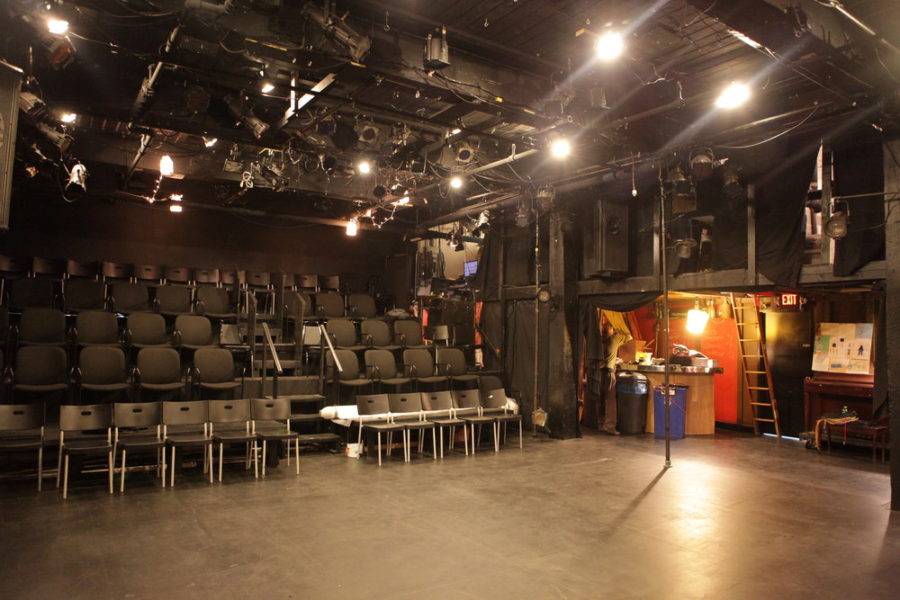Two new studies of two different metropolitan areas give hard numbers to what many suspect: that small theatres have an outsized influence not only on the theatre business but on local economies as well. A study published by New York Mayor Bill de Blasio’s office of media and entertainment shows that the city’s theatres and their artistic output contribute $1.3 billion annually to the local economy. And in Chicago, Chris Jones of the Chicago Tribune found that small theatres contributed $80 million, based on a study released by the Gaylord and Dorothy Donnelley Foundation. To give a sense of scale, New York’s commercial Broadway theatres are estimated to contribute $12.63 billion to the New York City economy, while Broadway in Chicago—a production company in the Windy City owned by the Nederlanders—brings in $635 million.
The NYC study measured 748 venues, defining “small theatres” as venues below 499 seats, which means that it included both Off-Broadway and Off-Off-Broadway companies. In addition to economic impact, the study touts small theatre’s cultural influence, citing the “ability of small venues to take risks on provocative new work. Many shows now deemed as cultural landmarks often have a long development history that is not always evident. Small theatres have helped develop the wider dramatic and performing arts industry over several generations.” Indeed this realm encompasses numerous Pulitzer-winning works, from Jackie Sibblies Drury’s Fairview to Annie Baker’s The Flick, not to mention works that were subsequently runaway Broadway hits, including the Tony-winning Hadestown and Hamilton.
Of the 748 NYC venues surveyed, 724 (96 percent) were nonprofit entities. The $1.3 billion figure includes direct revenues generated by the theatre (such as ticket sales); indirect impact, as when theatres work with non-theatrical entities (i.e., renting spaces to outside companies or working with advertisers); and the impact from theatre workers’ wage spending.
The mayor’s office study also found that the small theatre industry generated 8,400 full-time jobs and $512 million in wages. Notably, in the past four years, the small theatre industry has grown at a rate of 5 percent annually, outpacing other entertainment sectors in New York, including commercial theatre, which have grown at rate of 2 percent.
In addition to full-time jobs, though, the small theatre industry is supported by an estimated 9,336 volunteers, and the amount of volunteer labor used was found to be inversely proportional to the size of a theatre’s budget. For example, at organizations with annual operating budgets below $100,000, 92 percent of the labor came from volunteers. That’s not necessarily a sign of opportunism on the part of small-theatre producers; on average, 58 percent of all expenses for nonprofit small theatres were artists’ salaries and fees.
The NYC study also found that since 2011, approximately 100 theatre organizations have closed, including 37 performance venues, while during that same period, more than 280 theatre organizations opened their doors. The study cites challenges similar to what American Theatre reported in September: finding affordable and available space rentals, securing funding, retaining artistic talent despite the low wages, and generating revenue to offset increased operating costs (on average, ticket sales make up only about 41 percent of small companies’ revenue).
The study also makes recommendations for changes in city policy, including increasing support for theatres in the boroughs around Manhattan, beefing up marketing to emphasize the large influence that small theatres have, and assisting small companies with labor costs. The study concludes, “Despite challenging economic factors, the demand for small venue theatres and the art that emerges from them has continued to expand in recent years. With the right support, it will continue to grow in the years to come.”
Meanwhile, the Donnelley Foundation’s Chicago study drew its findings from 41 theatres, out of an estimated a total of 250 theatres in the Windy City. It found that approximately 267,400 audience members attended a production at one of those theatres last season; that number represents 10 percent of the city’s population. In addition, it found that 66 percent of the companies surveyed staged world premieres last season, representing 39 percent of the approximately 170 productions the surveyed companies mounted in Chicago. The study didn’t survey all of Chicago’s storefront theatres, nor did it address the particular challenges that those theatres face, which include burnout and scarcity of funding.
But like the NYC study, the Donnelley study does show that small theatres aren’t just a negligible niche; viewed collectively they are a cultural behemoth and a powerful economic driver. These studies should serve as a reminders to funders and donors that small theatres are as much worth supporting than larger ones—possibly moreso, as larger institutions currently receive a majority of public and private philanthropy. Among other things, support for small theatres is an investment in innovation. These studies should also remind the artists working in these environments that their work has monetary as well as cultural value, which should empower them to approach conversations about improving compensation and working conditions from a place of strength rather than scarcity.
“Storefront theatres are the lifeblood of our city’s artistic vitality, and our recent study proves just that,” said David Farren, executive director of the Gaylord and Dorothy Donnelley Foundation, in a statement. “Our goal—especially as we close out this Year of Chicago Theatre—is to enable small theatres to continue to push boundaries so that they not only achieve their artistic visions, but also continue to economically and culturally benefit their communities.”


